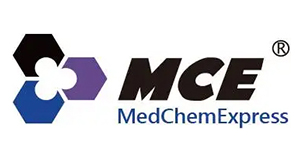Amentoflavone, CAS 1617-53-4
Amentoflavone, CAS 1617-53-4
SKU
MEXHY-N0662-10.1
Packaging Unit
10 mM/1 ml
Manufacturer
MedChemExpress
Availability:
loading...
Price is loading...
Product Description: Amentoflavone (Didemethyl-ginkgetin) is a potent and orally active GABA(A) negative modulator. Amentoflavone also shows anti-inflammatory, antioxidative, anti-viral, anti-tumor, anti-radiation, anti-fungal, antibacterial activity. Amentoflavone induces apoptosis and cell cycle arrest at sub-G1 phase[1][2][3][4].
Applications: Cancer-programmed cell death
Formula: C30H18O10
References: [1]Zhang Z, et al. Amentoflavone protects hippocampal neurons: anti-inflammatory, antioxidative, and antiapoptotic effects. Neural Regen Res. 2015 Jul;10(7):1125-33. /[2]Woo ER, et al. Amentoflavone inhibits the induction of nitric oxide synthase by inhibiting NF-kappaB activation in macrophages. Pharmacol Res. 2005 Jun;51(6):539-46./[3]Woo ER, et al. Amentoflavone inhibits the induction of nitric oxide synthase by inhibiting NF-kappaB activation in macrophages. Pharmacol Res. 2005 Jun;51(6):539-46./[4]Yen TH, et al. Amentoflavone Induces Apoptosis and Inhibits NF-ĸB-modulated Anti-apoptotic Signaling in Glioblastoma Cells. In Vivo. 2018 Mar-Apr;32(2):279-285./[5]Hwang JH, et al. Antibacterial effect of amentoflavone and its synergistic effect with antibiotics. J Microbiol Biotechnol. 2013;23(7):953-8./[6]Hanrahan JR, et al. Semisynthetic preparation of amentoflavone: A negative modulator at GABA(A) receptors. Bioorg Med Chem Lett. 2003 Jul 21;13(14):2281-4.
CAS Number: 1617-53-4
Molecular Weight: 538.46
Compound Purity: 99.81
Research Area: Cancer; Infection; Inflammation/Immunology; Neurological Disease
Solubility: DMSO : 125 mg/mL (ultrasonic)
Target: Apoptosis;Bacterial;Fungal;GABA Receptor;Reactive Oxygen Species;RSV
Applications: Cancer-programmed cell death
Formula: C30H18O10
References: [1]Zhang Z, et al. Amentoflavone protects hippocampal neurons: anti-inflammatory, antioxidative, and antiapoptotic effects. Neural Regen Res. 2015 Jul;10(7):1125-33. /[2]Woo ER, et al. Amentoflavone inhibits the induction of nitric oxide synthase by inhibiting NF-kappaB activation in macrophages. Pharmacol Res. 2005 Jun;51(6):539-46./[3]Woo ER, et al. Amentoflavone inhibits the induction of nitric oxide synthase by inhibiting NF-kappaB activation in macrophages. Pharmacol Res. 2005 Jun;51(6):539-46./[4]Yen TH, et al. Amentoflavone Induces Apoptosis and Inhibits NF-ĸB-modulated Anti-apoptotic Signaling in Glioblastoma Cells. In Vivo. 2018 Mar-Apr;32(2):279-285./[5]Hwang JH, et al. Antibacterial effect of amentoflavone and its synergistic effect with antibiotics. J Microbiol Biotechnol. 2013;23(7):953-8./[6]Hanrahan JR, et al. Semisynthetic preparation of amentoflavone: A negative modulator at GABA(A) receptors. Bioorg Med Chem Lett. 2003 Jul 21;13(14):2281-4.
CAS Number: 1617-53-4
Molecular Weight: 538.46
Compound Purity: 99.81
Research Area: Cancer; Infection; Inflammation/Immunology; Neurological Disease
Solubility: DMSO : 125 mg/mL (ultrasonic)
Target: Apoptosis;Bacterial;Fungal;GABA Receptor;Reactive Oxygen Species;RSV

 Deutsch
Deutsch










